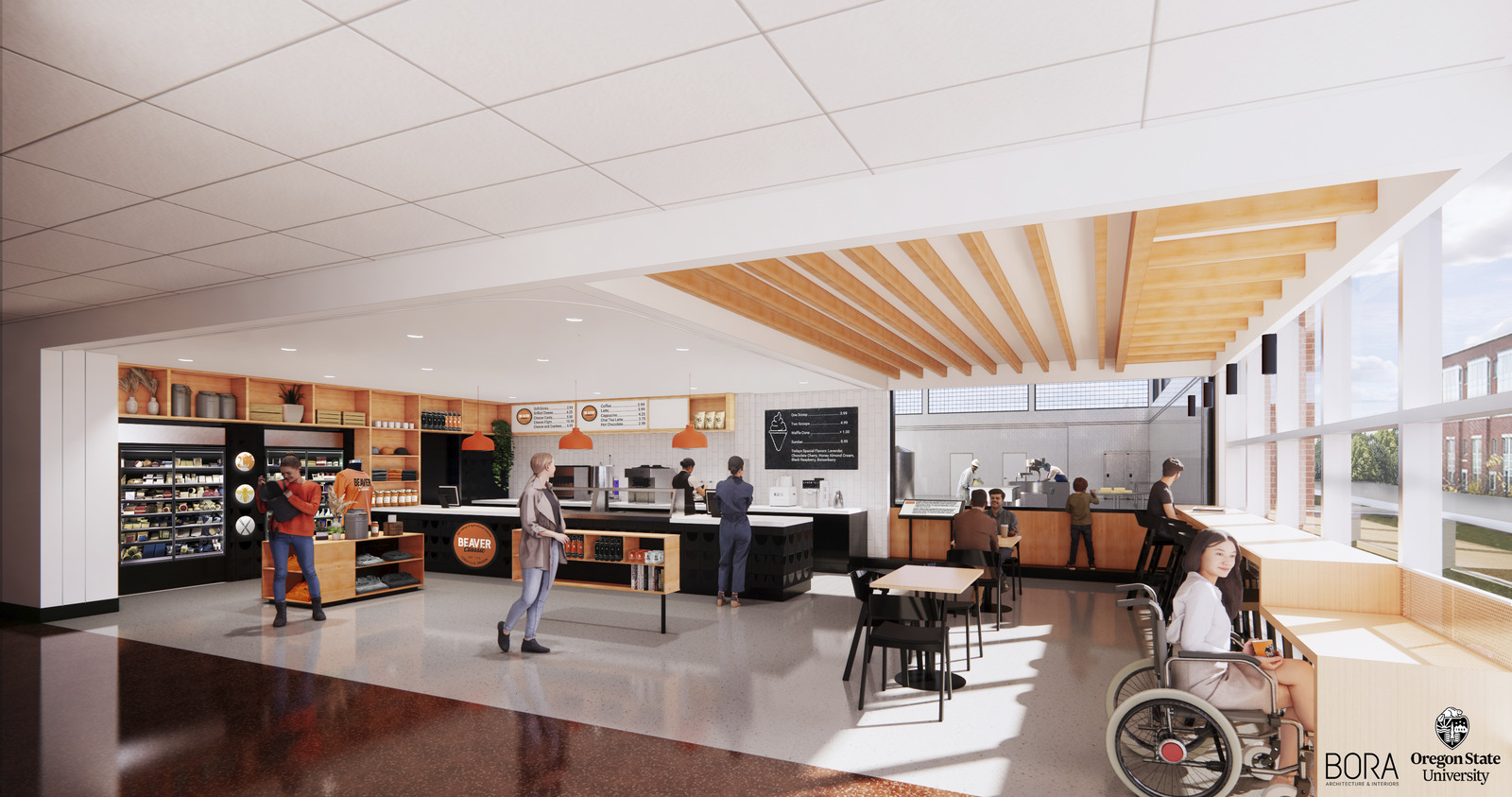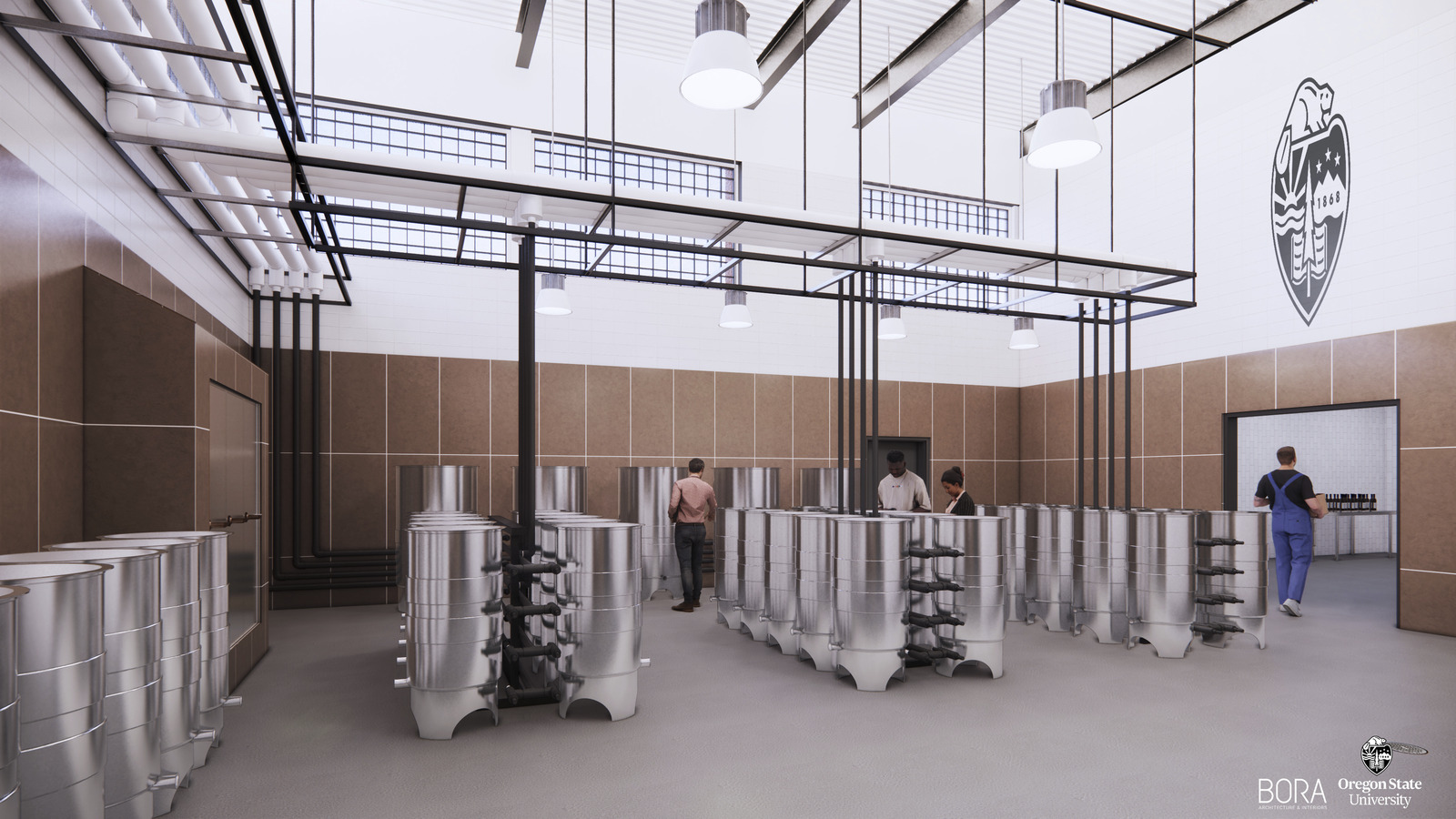

Corvallis, Oregon


Corvallis, Oregon
The major renovation of historic Withycombe Hall will transform an outdated, aged building into a flexible, innovative teaching and research environment that serves OSU’s agricultural science programs of Animal & Rangeland Sciences and Food Science & Technology–key to the University’s identity as a Land Grant institution.
Originally built in 1952 as a creamery and an animal research facility, Withycombe Hall will welcome a fully functioning Dairy Pilot Plant back into the building to support small-batch production and innovation in cheese and ice cream-making, while also adding a Wine Pilot Plant to further OSU’s enology education. As the home for Animal & Rangeland Sciences, the revitalized building will bring most of the program’s faculty, staff and research space together under one roof. A new shared Kitchen Lab will improve collaboration opportunities across both programs, while a public-facing Beaver Classic Store will serve as a business incubator allowing Agricultural Science & Technology departments to market and sell OSU-made agricultural products. Environmental graphics and design strategies will tell the story of these vital industries, reinforcing the legacy of OSU and its connections with the broader state of Oregon.
When completed, Withycombe Hall will contain state-of-the-art spaces for research and teaching supporting the advancement of science in these vital agricultural disciplines. Along with serving as an educational tool for sustainability, the building will be designed through a lens of universal access to expand the range of educational opportunities and career possibilities for all Oregonians.
Climate
New systems and technologies will result in a building that is responsive to current environmental challenges, reducing its resource consumption and more efficiently reducing waste generated by the building. The building aims to be an educational tool supporting the sustainable strategies integral to the agricultural sciences.
Health
The removal of hazardous materials and the careful vetting of new and recycled materials will support a healthier interior environment. Enhanced ventilation strategies and improved sealing of the historic structure will reinforce a commitment to high-quality air. Daylight and views in interior spaces as well as programming strategies to address the noise of the pilot plants will optimize the environment for research and learning.
Equity
A fundamental goal of the project is to create an environment where everyone feels welcome. The prioritization of equity and social justice throughout design is creating a facility that enhances access to these agricultural science programs for non-traditional students.
Size
71,459 sf